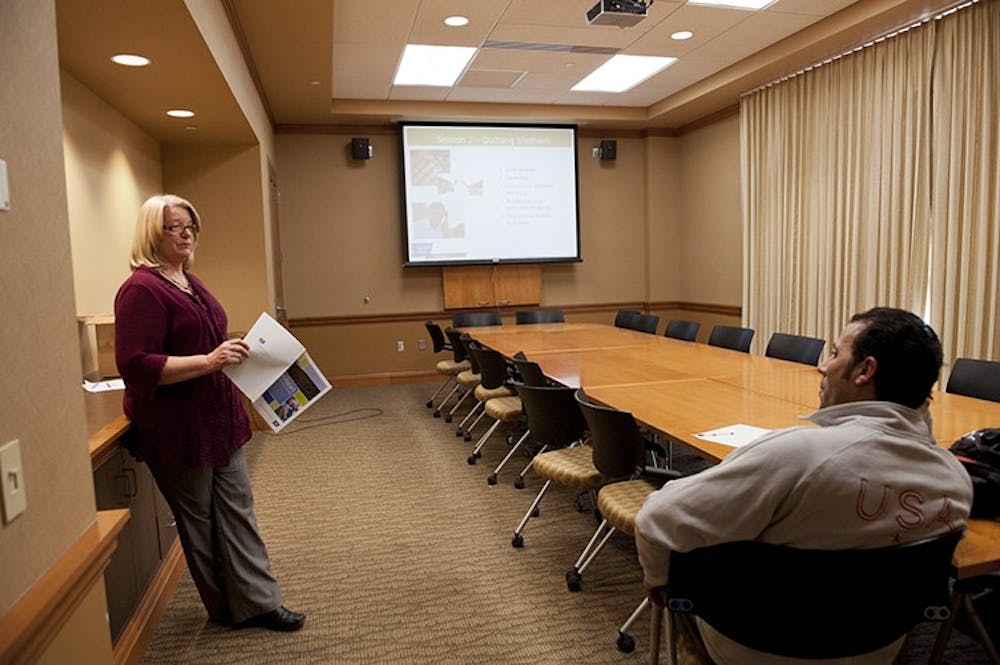Only a handful of people have attended Ohio University’s tobacco cessation classes, though officials say it’s nice to see some interested in the program.
Last semester, about 18 individuals attended. This semester 13 students have signed up, but only four have attended classes so far.
“They came because they want to. It would certainly indicate they’re willing to make a change,” Ann Addington, assistant director for health promotion, said in an email. “We value the health and well-being of all our students and this is one way in which we can provide support.”
The classes are held four times between Feb. 12 and March 12 to teach students techniques and strategies to quit smoking, and also provide participants with Nicotine Replacement Therapy, patches or gum upon their completion.
More than $1,500 was provided for the Nicotine Replacement Therapy products, which include 25 boxes of gum and 25 boxes of patches. The money was made available through the uFund, a group run by Student Senate that uses money raised from student judiciary fees to provide an alternative to nighttime high-risk behavior, according to a university news release.
As of 2010, approximately 25 percent of full-time college students smoke, according to the Americans for Nonsmokers’ Rights website.
“It’s better than nothing,” said Majd Mariam, a first-year graduate student studying communications and development who smokes. “I think if the university really needs to end smoking on campus, they need a creative approach.”
The sessions are complimentary for students and faculty, but faculty must foot the roughly $25 bill for the Nicotine Replacement Therapy products.
The classes are a health initiative and not related to the university’s plans to be a tobacco-free campus in the next few years.
“It’s important for those who use tobacco to know that the university doesn’t view them as bad people,” said Interim Ombudsman Judith Piercy. “We recognize individual choice; this is a community health issue.”
About 900 responses were collected from a university-wide survey about student opinions about the tobacco-free initiative; the Division of Student Affairs’ office distributed the survey.
The decision to become a tobacco-free campus follows a recommendation made by the Board of Regents, which OU’s Board of Trustees agreed to act upon.
The Tobacco-free Implementation Team, a committee comprising 15 members from several entities on campus, including admissions and athletics, hopes the survey’s results will help them decide the finer details of the plan.
Undecided variables include whether OU will ban e-cigarettes and whether the university will have smoking-designated areas when it becomes tobacco-free.
“Next year we can try some things and then modify if we need to,” Piercy said.
@Dinaivey
db794812@ohiou.edu






